Cellular Respiration Test
1/27
There's no tags or description
Looks like no tags are added yet.
Name | Mastery | Learn | Test | Matching | Spaced |
|---|
No study sessions yet.
28 Terms
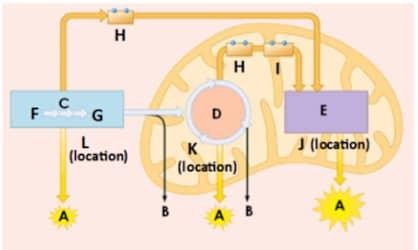
Identify A
ATP
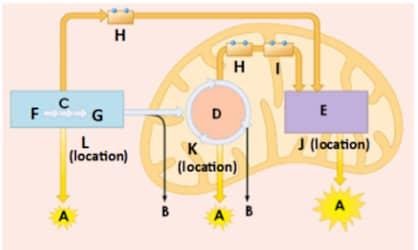
Identify B
Carbon Dioxide
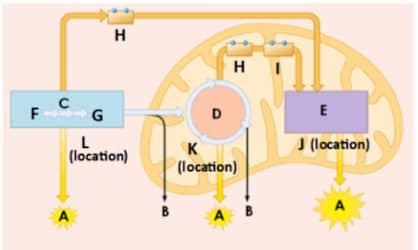
Identify C
Glycolysis
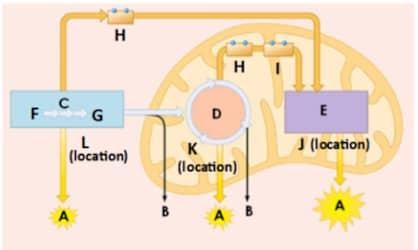
Identify D
Krebs Cycle
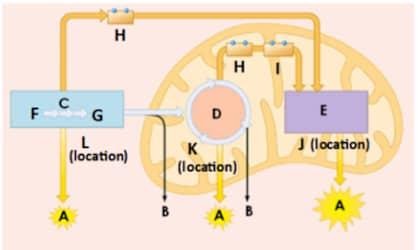
Identify E
Electron Transport Chain (ETC)
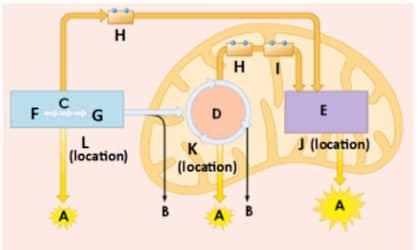
Identify F
Glucose
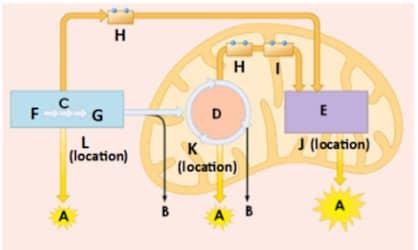
Identify G
Pyruvate
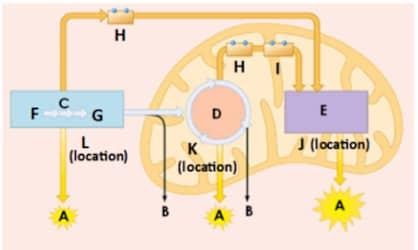
Identify H
NADH
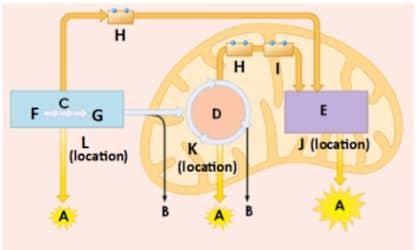
Identify I
FADH2
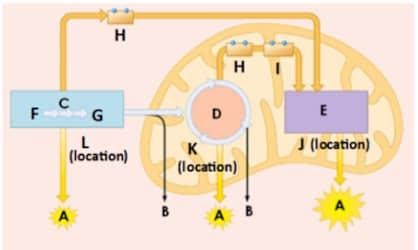
Identify J
Mitochondrial Inner Membrane (Folds)
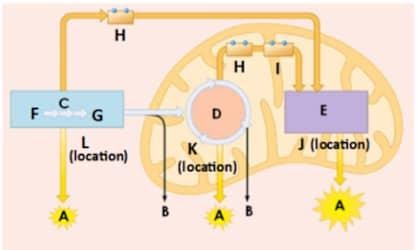
Identify K
Mitochondrial Matrix
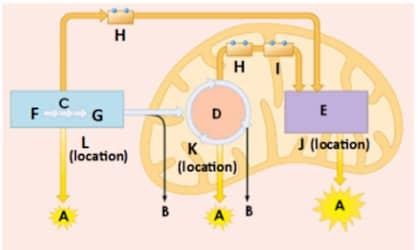
Identify L
Cytoplasm
Which of the following statements is false?
Glycolysis occurs in the mitochondria.
During glycolysis, how many pyruvate are made from 1 molecule of glucose?
2
If the chemical formula for glucose is C₆H₁₂O₆, which of the following is the most likely chemical formula for pyruvate?
C3H6O3
How many ATP are produced during glycolysis?
2
How many ATP are produced during ETC?
32-34
How many ATP are produced in Krebs Cycle?
2
Where does the Krebs Cycle occur?
Mitochondrial Matrix
Where does the Electron Transport Chain (ETC) occur?
Mitochondrial Inner Membrane
Where does glycolysis occur?
Cytoplasm
Does the Electron Transport Chain (ETC) require oxygen?
Yes
Does glycolysis require oxygen?
No
Muscle cramps that occur during exercise are most likely caused by which of the following?
Lactic Acid Fermentation
Bacteria that carry out anaerobic respiration complete which of the following step(s) of cellular respiration? Select any and all correct answers.
Glycolysis
Fermentation is a type of _____________ respiration and involves the step of _____________ only.
Anaerobic; glycolysis
Explain why plants must go through BOTH photosynthesis and cellular respiration while animals ONLY through cellular respiration.
Plants must use photosynthesis to MAKE their glucose first. Then, plants break down the glucose they've made into ATP using the process of cellular respiration. Animals consume other organisms (or eat other organisms) to get their source of glucose to break down into ATP. This is why animals do not go through photosynthesis.
What is the full name of ATP?
Adenosine Triphosphate